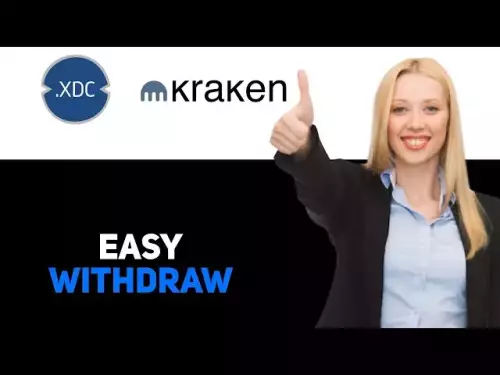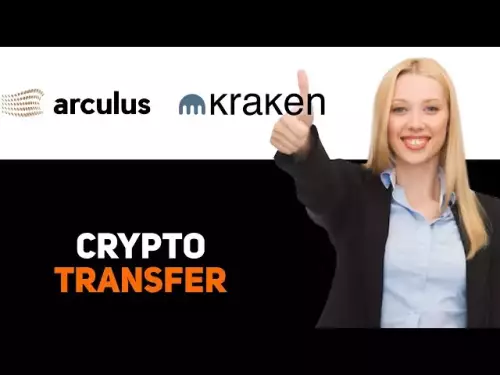 |
|
 |
|
 |
|
 |
|
 |
|
 |
|
 |
|
 |
|
 |
|
 |
|
 |
|
 |
|
 |
|
 |
|
 |
|
Cryptocurrency News Articles
Decoding the VIX: Investor Sentiment, Market Swings, and the Cost of Protection
Sep 29, 2025 at 05:01 am
Navigating the VIX landscape: Balancing potential gains with the costs of hedging against market volatility. Are investors paying too much for peace of mind?

Ever feel like Wall Street's speaking a different language? Let's break down the VIX, investor behavior, and those pesky costs eating into your returns. Is chasing volatility worth it?
The VIX Surge: Fear or Foresight?
We've seen a surge in funds tied to the VIX (Cboe Volatility Index), crossing the $1 billion mark this year. Investors, fresh off a record rally, are bracing for potential turbulence and piling into exchange-traded products (ETPs) that track VIX futures. The idea is simple: if stocks tank, volatility will spike, and these products will pay out. Think of it as buying insurance for your portfolio. But is this insurance overpriced?
The 'Chainsaw' Effect: Understanding the Costs
Here's the catch: waiting for that moment of market chaos can be expensive. These VIX-linked funds come with built-in costs that can erode returns. Bloomberg Intelligence's Eric Balchunas aptly describes them as “a chainsaw — very effective at certain jobs, but it can cut your arm off.” He's talking about how these funds can bleed money when future market swings are expected to be bigger than what's happening right now.
Timing is everything. A well-timed buy and sell around a specific event (like, say, sweeping US tariffs) can yield impressive returns. But holding these funds for the long haul? Ouch. We're talking potential losses of 78% in a year. And yet, money keeps flowing in. VXX is down 32% but still boasts $1 billion in assets, with a whopping 312% net inflow. Investors keep adding to their VIX holdings, even as the costs mount. Why?
Why Investors are Still Pouring Money Into VIX Products
Michael Thompson at Little Harbor Advisors puts it this way: “these can increase in price pretty dramatically, almost like an option but without an expiration date.” These vehicles offer a hedge for stock owners, as the VIX typically rises when the S&P 500 falls. Retail traders, in particular, seem to be looking for cautious, protective moves.
The Contango Conundrum: How Rolling Contracts Hurt
But this protection comes at a price. UVIX, for example, charges an expense ratio of 2.8%. These funds hold VIX futures expiring in different months and roll their contracts daily, selling the expiring contract and buying the next one. When October trades below November (a situation called contango), the fund is essentially selling low and buying high, draining cash. This rolling problem isn't new; it's happened before with other commodities, like oil.
VIX Curve Strategies: A Hedge Fund Playground
The steep VIX futures curve, with its contango, presents both opportunities and risks. Strategists at Societe Generale SA have suggested trades to exploit this discount, such as selling the near-term VIX future and buying the next month. However, a sharp equity selloff could invert the curve and wipe out those gains.
The Cost of Peace of Mind
Ultimately, some investors see these losses as the cost of protection against a market downturn. Hedge funds also use these products for quick, tactical trades. The question is: are you paying too much for that peace of mind? Are there more cost-effective ways to hedge your portfolio?
The AI Angle: Token Costs and Computing Power
Speaking of costs, another area of concern for investors is token costs, especially when scaling AI applications. High token costs have become a core pain point for many companies in advancing the scaling of AI applications. As intelligent agent applications expand further, the token consumption per interaction session is surging rapidly. The current cost structure has caused many valuable innovative applications to hit a roadblock due to 'economic feasibility' even before reaching scale, posing significant challenges to profitability. As the AI industry transitions from 'model competition' to 'application implementation,' inference costs and interaction speed have now become more critical competitive dimensions than model parameter size.
The Bottom Line
The VIX and related products can be useful tools, but they're not a magic bullet. Understand the costs, time your trades carefully, and consider alternative hedging strategies. And, hey, maybe just take a deep breath and remember that market volatility is a normal part of investing. Now go grab a slice and relax – you deserve it!
Disclaimer:info@kdj.com
The information provided is not trading advice. kdj.com does not assume any responsibility for any investments made based on the information provided in this article. Cryptocurrencies are highly volatile and it is highly recommended that you invest with caution after thorough research!
If you believe that the content used on this website infringes your copyright, please contact us immediately (info@kdj.com) and we will delete it promptly.
-

-

-

-

- Decoding Crypto Trends: Bittensor's Bull Run, Cardano's Dip, and LivLive's Presale Buzz in 'Uptober 2025'
- Oct 11, 2025 at 09:01 am
- Analyzing the latest crypto market moves: Bittensor's surge, Cardano's potential pullback, Aurelion's gold-backed treasury, Solana's transaction dip, and LivLive's presale allure. Your guide to navigating crypto trends.
-

-

-

-

-
























![[4K 60fps] Prisma by novichokk (1 Coin) [4K 60fps] Prisma by novichokk (1 Coin)](/uploads/2025/10/14/cryptocurrencies-news/videos/k-fps-prisma-novichokk-coin/68ee49804ba00_image_500_375.webp)






































